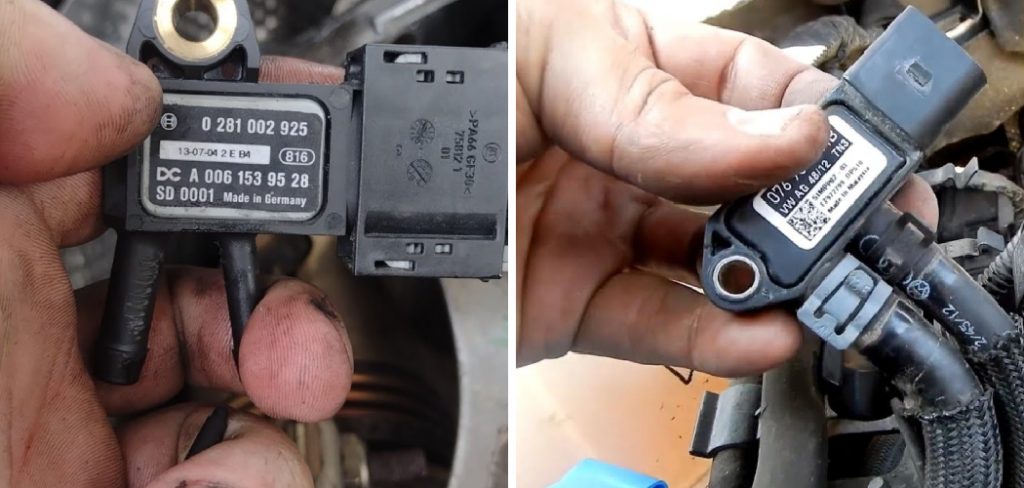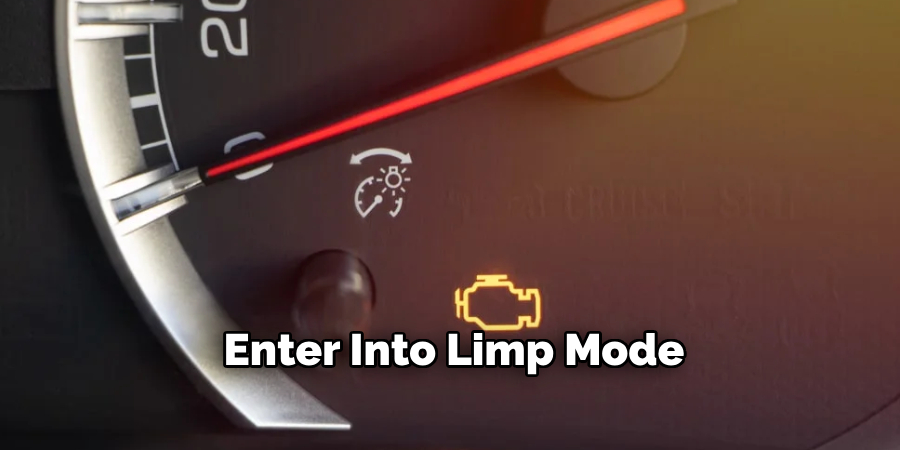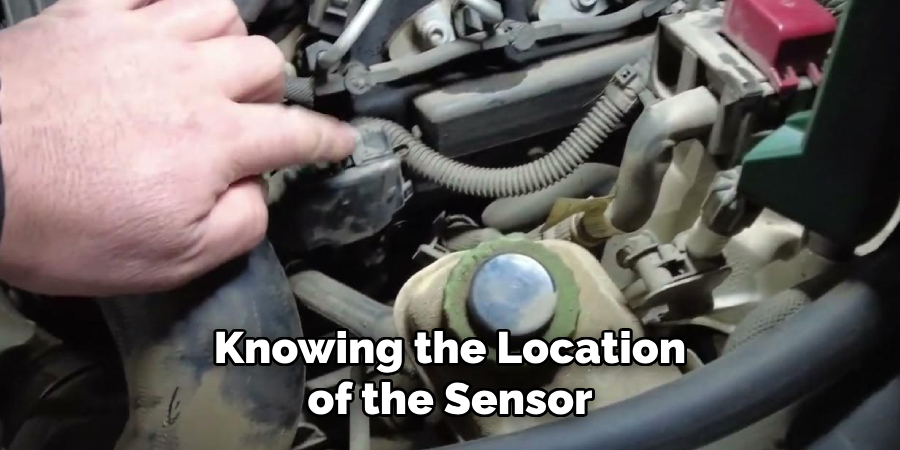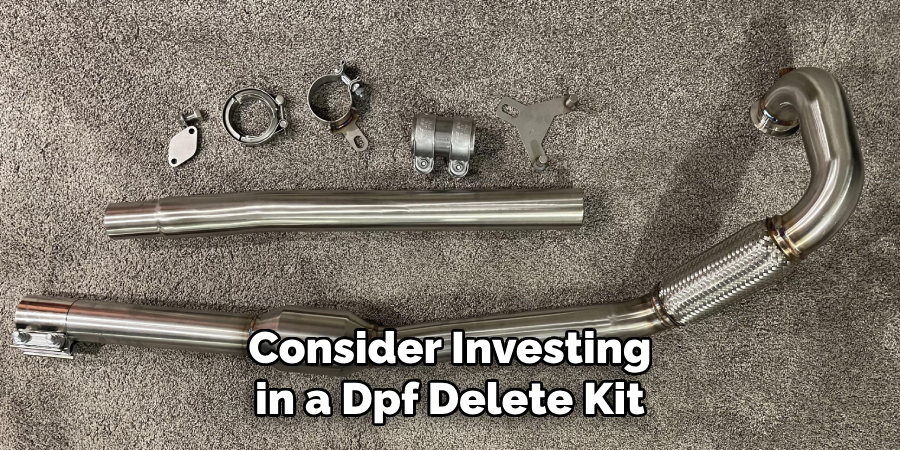Are you tired of dealing with expensive repairs and maintenance on your diesel particulate filter (DPF)? It seems like every time you turn around, there’s another issue with the pressure sensor, causing your vehicle to go into limp mode and reducing its overall performance.

Well, you’re not alone. Many diesel owners are frustrated with the constant headaches that come along with owning a vehicle equipped with a DPF. But what if there was a way to bypass the DPF pressure sensor and regain control over your vehicle’s performance?
In this blog post, we will explore how to bypass DPF pressure sensor, providing you with the knowledge and tools necessary to take matters into your own hands and potentially save thousands of dollars in repair costs. So, if you’re ready to say goodbye to DPF issues and hello to improved engine performance, keep reading!
Why May You Want to Bypass DPF Pressure Sensor?
1 . To Avoid Costly Repairs
As mentioned earlier, dealing with DPF pressure sensor issues can be costly. Not only do you have to pay for the replacement of the sensor itself, but it often leads to issues with the entire DPF system. This means expensive repairs and potentially even having to replace the entire DPF unit. By bypassing the pressure sensor, you can avoid these costly repairs and save yourself a significant amount of money in the long run.
2 . To Improve Engine Performance
When the DPF pressure sensor malfunctions, it can send false readings to your vehicle’s engine control module (ECM), causing it to enter into limp mode. This means reduced performance and power for your vehicle, which is frustrating for anyone who relies on their diesel for work or everyday use. Bypassing the sensor can prevent this from happening and keep your vehicle running at its optimal performance.

3 . To Increase Fuel Efficiency
Limp mode not only affects engine power but also has a significant impact on fuel efficiency. When your vehicle is struggling to perform, it requires more fuel to do so, resulting in decreased fuel efficiency. Bypassing the DPF pressure sensor can prevent your vehicle from entering limp mode and help you save money on fuel costs.
4 . To Avoid Emissions-Related Issues
Many countries have strict emissions regulations, and a malfunctioning DPF system can cause your vehicle to fail these tests. This means that not only will you have to deal with costly repairs, but you may also face fines or even have your vehicle taken off the road. Bypassing the pressure sensor can help ensure that your vehicle remains compliant with emissions regulations.
5 . To Have More Control Over Your Vehicle
Ultimately, bypassing the DPF pressure sensor gives you more control over your vehicle. Rather than relying on a faulty sensor to dictate when and how your vehicle performs, you can take charge and potentially improve its overall performance. This is especially beneficial for those who use their diesel for off-roading or towing purposes.
How to Bypass DPF Pressure Sensor in 5 Easy Steps
Step 1: Understand the Basics of the DPF System
Before attempting to bypass the pressure sensor, it’s important to have a basic understanding of how the DPF system works. This includes knowing the location of the sensor, its purpose, and how it communicates with the ECM.

Step 2: Gather Necessary Tools and Materials
To bypass the DPF pressure sensor, you will need a few supplies, including a wire harness, electrical tape, and a resistor (specific ohm value will depend on your vehicle). It’s also recommended to have a wiring diagram for your specific vehicle and access to online forums or resources for troubleshooting.
Step 3: Locate and Remove the Pressure Sensor
Using your vehicle’s wiring diagram, locate the DPF pressure sensor. It is typically located near the DPF unit itself and may be labeled as a “DPF differential pressure sensor” or something similar. Once located, carefully remove the sensor from its housing.
Step 4: Install Wire Harness and Resistor
Attach one end of the wire harness to each of the connection points on the pressure sensor. Next, connect the resistor to the other end of the wire harness. This will create a bypass for the signal between the sensor and ECM.
Step 5: Test and Troubleshoot
After completing the installation, start your vehicle and test its performance. If everything is working correctly, you should notice improved engine power and no errors related to the DPF system. However, if any issues arise, use online resources or seek professional help for troubleshooting.
Additional Tips to Bypass DPF Pressure Sensor
1 . Do Not Attempt if You Don’t Have the Necessary Knowledge or Experience

Bypassing the DPF pressure sensor requires a basic understanding of vehicle electronics and wiring. If you do not have this knowledge or experience, it’s best to seek professional help. Also, keep in mind that bypassing the sensor may void your vehicle’s warranty.
2 . Research Your Specific Vehicle
Different vehicles may have different locations and wiring for their DPF pressure sensors. It’s essential to research and understand your specific vehicle’s system before attempting to bypass the sensor.
3 . Use Quality Materials
To ensure a successful bypass, it’s crucial to use high-quality materials. This includes a wire harness with proper gauging, electrical tape that can withstand heat and vibrations, and a resistor with the correct ohm value.
4 . Double Check Your Wiring
Before starting your vehicle after installation, double-check all connections and wiring to ensure they are secure and correctly attached. Loose or incorrect wiring could result in further issues or even damage to your vehicle.
5 . Consider Using a DPF Delete Kit
If you’re experiencing frequent DPF pressure sensor issues and are looking for a more permanent solution, you may want to consider investing in a DPF delete kit. These kits remove the entire DPF system, including the pressure sensor, from your vehicle.

6 . Stay Up-to-Date on Emissions Regulations
While bypassing the DPF pressure sensor can prevent emissions-related issues, it’s essential to stay up-to-date on your local emissions regulations. These regulations may change over time, and it’s important to ensure your vehicle remains compliant.
7 . Monitor Your Vehicle’s Performance
After bypassing the pressure sensor, be sure to monitor your vehicle’s performance closely. If you notice any issues or a decrease in fuel efficiency, it’s essential to address them promptly.
8 . Consider Regular Maintenance and Cleaning of DPF System
To prevent future issues with the DPF system, consider regular maintenance and cleaning. This can help remove built-up soot and debris that may cause pressure sensor malfunctions. Consult your vehicle’s manual or a professional for the best maintenance schedule and cleaning methods.
Frequently Asked Questions
What Precautions Should I Take When Bypassing the DPF Pressure Sensor?
When bypassing the DPF pressure sensor, it’s essential to take proper precautions to ensure your safety and that of your vehicle. This includes disconnecting the battery before starting any work, wearing protective gear, and following all instructions carefully.
Will Bypassing the DPF Pressure Sensor Cause Any Damage to My Vehicle?
If done correctly, bypassing the DPF pressure sensor should not cause any damage to your vehicle. However, as with any modification, there is always a risk involved. It’s important to research and understand the process before attempting it.
Is Bypassing the DPF Pressure Sensor Legal?
Bypassing the DPF pressure sensor may be legal in some areas, but it’s important to research and understand your local emissions regulations before proceeding. In some cases, bypassing the sensor may be considered a violation and result in penalties.
Can I Use Any Resistor for the Bypass?
No, it’s essential to use a resistor with the correct ohm value for your specific vehicle. Using an incorrect resistor can cause further issues or potentially damage your vehicle’s ECM.
What Should I Do if I Notice Issues After Bypassing the DPF Pressure Sensor?
If you notice any issues or a decrease in performance after bypassing the DPF pressure sensor, check all connections and wiring for loose or incorrect installation. If the issue persists, seek professional help for troubleshooting. Remember to also regularly monitor your vehicle’s performance after the bypass to address any potential issues promptly.
Conclusion
Now you know how to bypass the DPF pressure sensor. In conclusion, bypassing the DPF pressure sensor can have several benefits, including increased fuel efficiency, avoiding emissions-related problems, and giving you more control over your vehicle.
However, it’s essential to approach with caution and ensure proper research and knowledge before attempting to bypass the sensor. Regular maintenance and monitoring of your vehicle’s performance are also crucial for long-term success. So, if you’re experiencing issues with your DPF system, consider bypassing the pressure sensor as a potential solution. With proper knowledge and caution, you can successfully bypass the DPF pressure sensor in just five easy steps.

Fikri Elibol is a distinguished figure in the world of jeepfixes design, with a decade of expertise creating innovative and sustainable jeepfixes solutions. His professional focus lies in merging traditional craftsmanship with modern manufacturing techniques, fostering designs that are both practical and environmentally conscious. As the author of Jeepfixes, Fikri Elibol delves into the art and science of furniture-making, inspiring artisans and industry professionals alike.
Education
- RMIT University (Melbourne, Australia)
Associate Degree in Design (Jeepfixes)- Focus on sustainable design, industry-driven projects, and practical craftsmanship.
- Gained hands-on experience with traditional and digital manufacturing tools, such as CAD and CNC software.
- Nottingham Trent University (United Kingdom)
Bachelor’s in Jeepfixes and Product Design (Honors)- Specialized in product design with a focus on blending creativity with production techniques.
- Participated in industry projects, working with companies like John Lewis and Vitsoe to gain real-world insights.
Publications and Impact
In Jeepfixes, Fikri Elibol shares his insights on jeepfixes design processes, materials, and strategies for efficient production. His writing bridges the gap between artisan knowledge and modern industry needs, making it a must-read for both budding designers and seasoned professionals.
